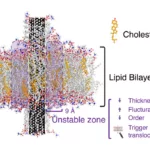Soft Matter and Biophysics research community
Postdoc: q-bio of cellular information processing
We are looking for postdocs with expertise in biology, physics, mathematics, or engineering. Opportunities span experimental, computational, and theoretical pro...
Postdoc on modelling complex colloidal mixtures for use in bionic muscle engineering (Paris-Saclay, France)
We have an open PDRA position (fully funded, four years) on biocompatible stimuli-responsive polymer/colloid mixtures at the Laboratoire de Physique des Solides...
Phd research project: A radical approach to Alzheimer’s Disease via next-generation computational and experimental methods
The proposed PhD project takes on a radical new path towards the study of Alzheimer’s Disease (AD), which will open novel avenues for the development of breakth...
Postdoc: Theoretical modeling of nanoparticles interacting with cells
OBJECTIVES The project is based on a recent publications showing the importance of membrane tension for interaction of nanoparticles with cells1–3. Deformation ...
General topic postdoc positions at Ca’ Foscari University of Venice
Ca’ Foscari University of Venice has been awarded a Marie Curie Cofund program, called Global@Venice, that will allow 15 young and talented post-docs to work wi...
Site News
Antibacterial Action of Nanoparticles by Lethal Stretching of Bacterial Cell Membranes
Adv. Mat. 32 (52), 2005679 (2020) Denver P. Linklater, Vladimir A. Baulin, Xavier Le Guével, Jean‐Baptiste Fleury, Eric Hanssen, The Hong Phong Nguyen, Saulius ...
Unexpected Cholesterol-Induced Destabilization of Lipid Membranes near Transmembrane Carbon Nanotubes
Phys. Rev. Lett. 124(3), 038001 (2020) Yachong Guo, Marco Werner, Jean Baptiste Fleury and Vladimir A. Baulin Cholesterol is a crucial component of mammalian ce...
Simulations of Protein Adsorption on Nanostructured Surfaces
Scientific Reports, 9, 4694 (2019) Berardo M. Manzi, Marco Werner, Elena P. Ivanova, Russell J. Crawford and Vladimir A. Baulin Recent technological advances ha...
The Interaction of Giant Unilamellar Vesicles (GUVs) with the Surface Nanostructures on Dragonfly Wings
Langmuir, January (2019) S. Cheeseman, Vi Khanh Truong, V. Walter, F. Thalmann, C. M. Marques, Eric Hanssen, J. Vongsvivut, M. Tobin, V. A. Baulin, S. Juodkazis...



